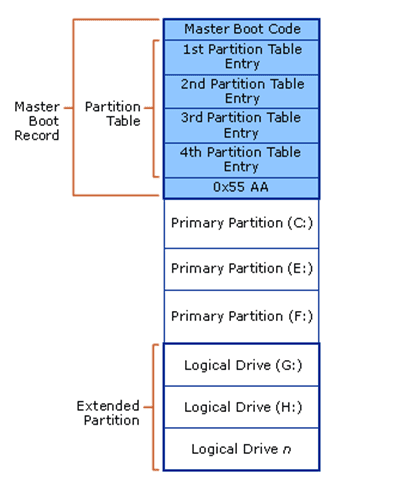Windows GPT Disks – Is Bigger Really Better?
The Microsoft Windows operating system offers 2 architectures for partitioning disk drives into usable areas to store data. The 2 approaches differ with how they track the mapping of physical disk sectors to logical block numbers. The original method of partitioning disks is referred to as MBR (Master Boot Record) which was developed during the 1980’s. Although widely accepted, this scheme has many shortcomings including partitions being limited to 2TB (terabytes) in size.
As disk capacity has increased to over a terabyte, a new partition architecture developed in the late 1990’s called GPT (GUID Partition Table) was created to accommodate the larger partition sizes. In addition to size, GPT disks also offer more partitions and greater resilience to corruption. This article examines MBR and GPT-based Windows disks discussing, their benefits and disadvantages.
GPT-based Disks
Microsoft adopted the GPT disk partitioning scheme in 2001 from Intel’s EFI (Extensible Firmware Interface) specifications. It accommodates disk partition sizes up to 18 EB (Exabyte’s) or 1 million terabytes. Each GUID (globally unique ID) partition contains a 36-character field to allow a readable name to be associated with each partition.
Another shortcoming of MBR-based disk partitions is the limitation of 3 primary partitions and 1 extended partition. The extended partition can be further divided into multiple logical partitions. By limiting the number of partitions on a disk, you effectively reduce the number of partitions to organize or manage the data. With GPT-based disks, Microsoft supports up to 128 partitions per disk. There are several partitions reserved for dynamic disks and EFI-boot support so only 124 partitions are available for data.
MBR Disk Layout
The following diagram from the Microsoft TechNet Library provides an example of a typical MBR disk layout.
Figure 1: MBR Disk Layout
Perhaps one of the biggest pitfalls of MBR-based disks is their potential for corruption of the partition table, a region on the disk that maps sectors to logical block numbers. MBR disks only have 1 partition table to keep track of all the blocks in the partition. If the table becomes corrupt, the entire disk must be recovered from backup. Windows GPT-based disks have multiple, redundant partition tables so that if one is detected as being corrupt, it can self-heal itself from a redundant copy of the table.
For compatibility purposes, the Master Boot Record is kept at LBA 0 in GPT-based drives, and the GPT header begins at LBA 1. The partition type of a GPT disk is marked as 0xEE, which prevents MBR-based disk utilities from recognizing the partition type and potentially corrupting the data. It is possible to convert an MBR disk to a GPT-based disk and vice versa, but any data must first be backed up and all the partitions deleted.
GPT-based Disk Layout
The following diagram from the Microsoft TechNet Library provides an example of the disk layout for a GPT-based disk.
Figure 2: GPT-based Disk Layout
Summary
Despite the many advantages of GPT-based disks over MBR drives, many vendors still utilize the MBR technology since it is still predominantly used in the real world. GPT disks are gaining popularity with their benefits in terms of partition size, number of partitions, and resilience. Windows Failover Clusters now support GPT-based disks which will broaden their use in enterprise data centers. See related article on Failover Cluster Setup. So while bigger isn’t always better, the many advantages of GPT-based drives make them an attractive alternative.
Watch for future articles on Windows storage technologies such as “Disk Fragmentation and Why You Should be Concerned”. This article will examine how files are placed on disk and what causes them to become fragmented. It will explore how fragmented files affect performance and what can be done to avoid it.





